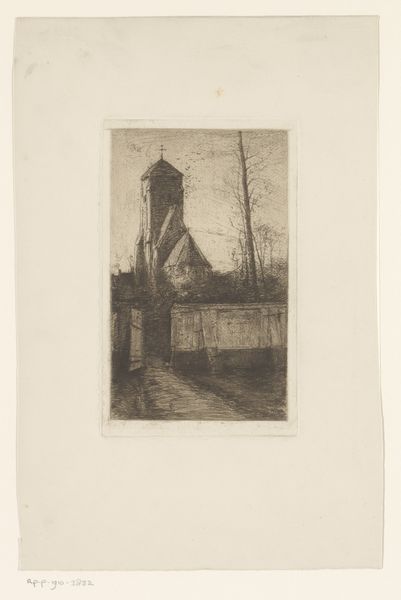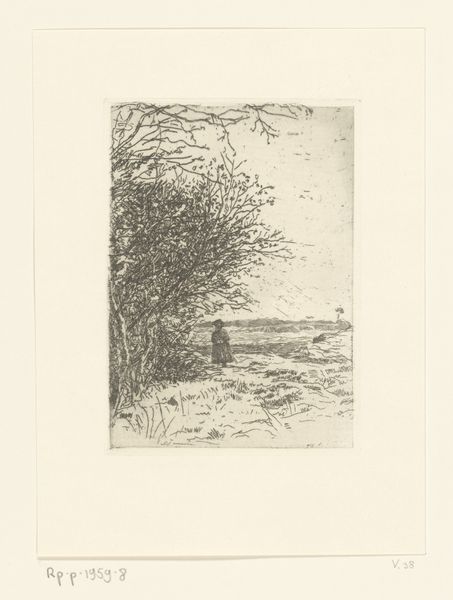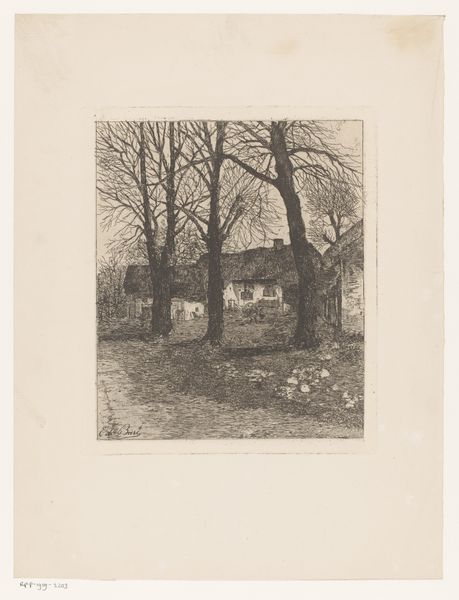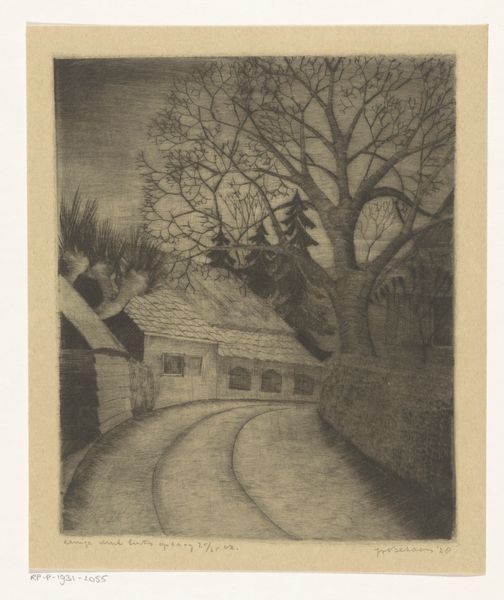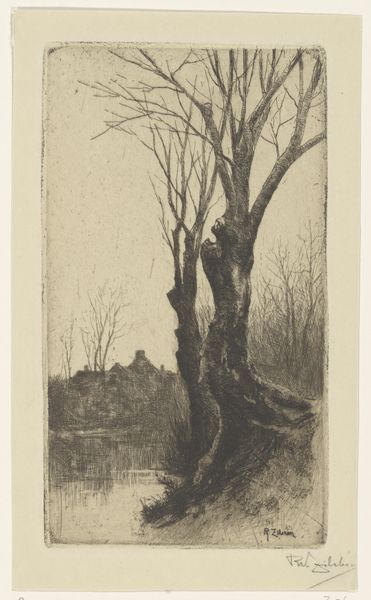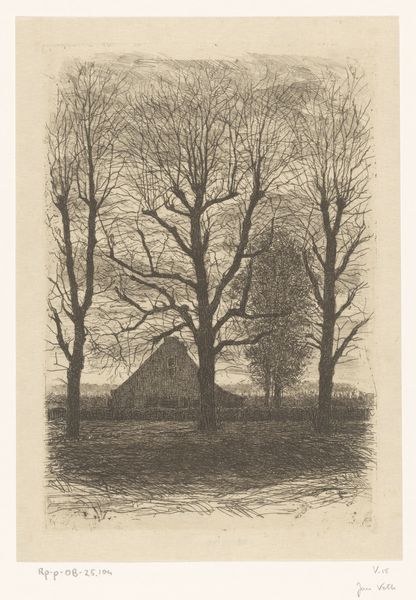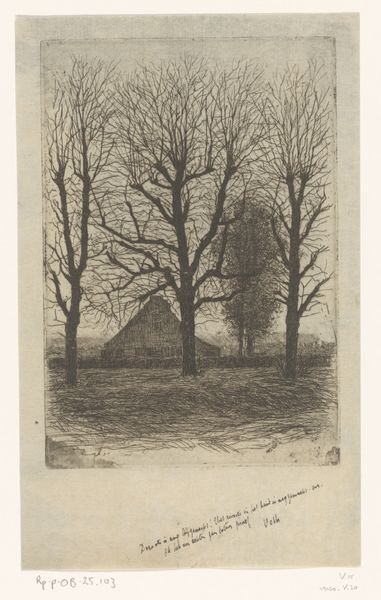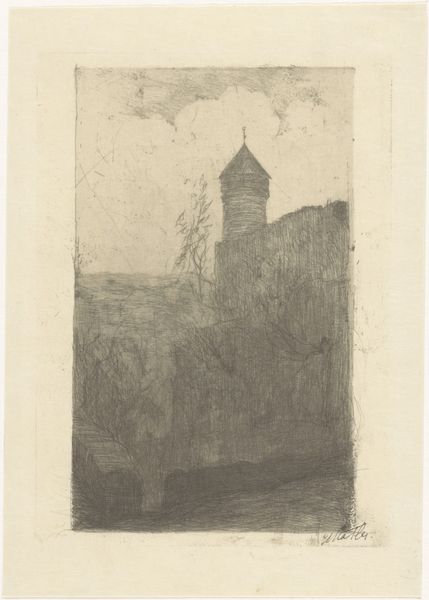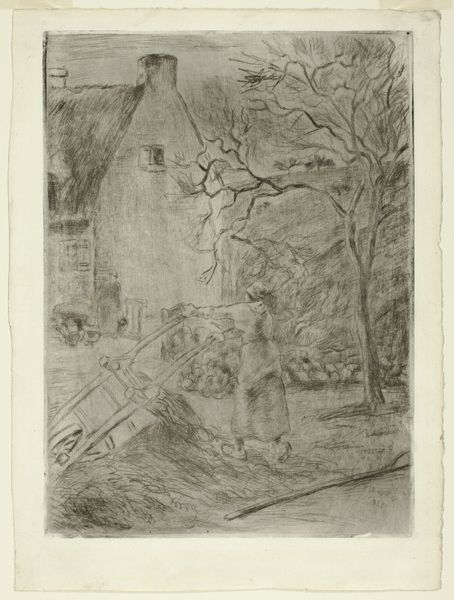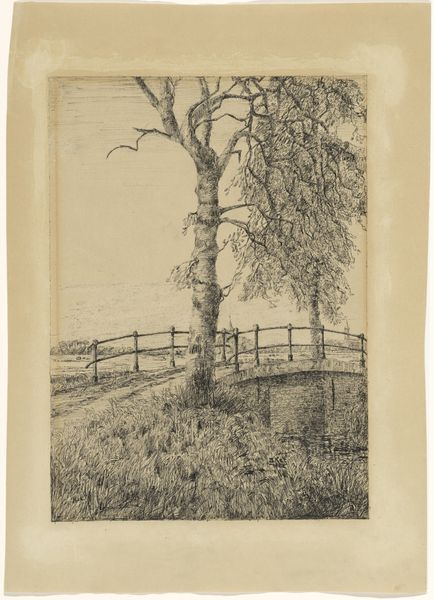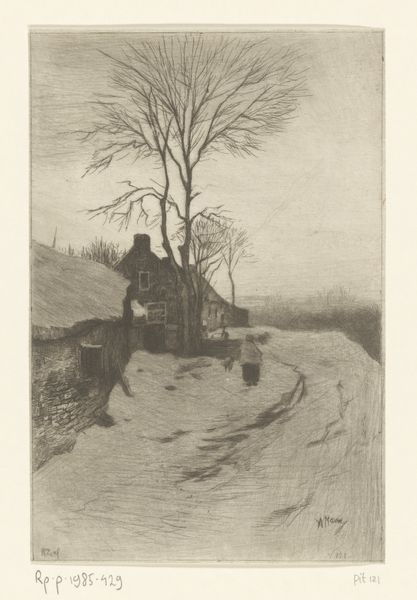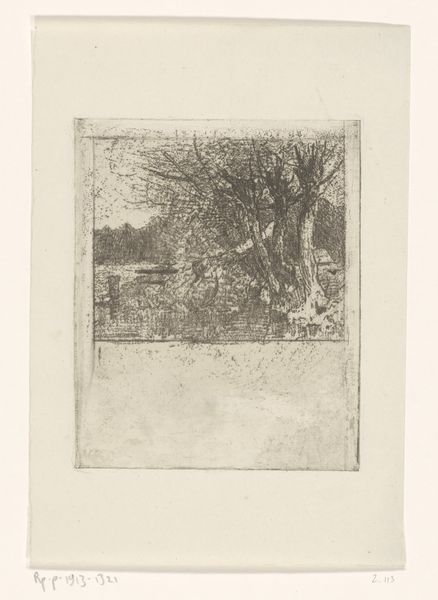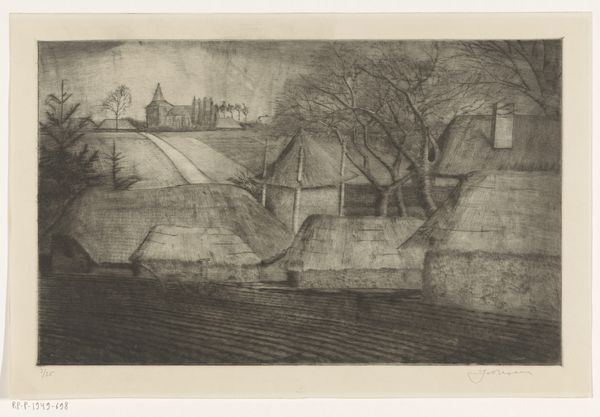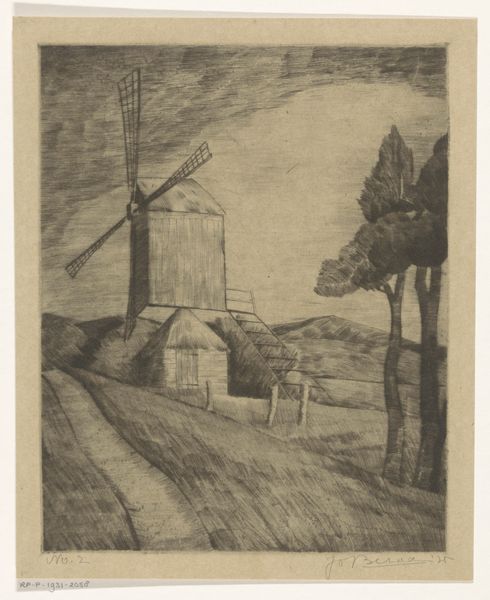
print, etching
# print
#
etching
#
landscape
#
realism
Dimensions: height 200 mm, width 149 mm, height 224 mm, width 175 mm
Copyright: Rijks Museum: Open Domain
Curator: Viewing Jo Bezaan's "Hooischelf" from 1929, my initial sense is one of quiet desolation. A stark, grayscale palette emphasizes the harshness of the rural landscape. Editor: Indeed. Before us we have Bezaan’s rendering of haystack silhouettes near farm buildings. A humble etching, masterfully utilizing the graphic, almost architectural linearity made available through the technique. It emphasizes shape and compositional harmony over any form of pictorial narrative. Curator: I'm struck by the clear delineation of space – the fence visually anchoring the foreground and the structures and pale moon creating depth in the background. What’s especially striking to me is the material presence of those stacks, so realistically capturing how farmers preserve food for their livestock and the role of those constructions for the community in pre-industrial agricultural times. Editor: Consider too the social context. A realist landscape from this period cannot simply be about the objective truth of a view; it is an essay on working-class environments. Every scratch of the etching tool across the plate signifies labor. The rough texture speaks to a specific, almost haptic engagement with material conditions, bringing us a feeling for those conditions that only looking at it with intention could expose to us. Curator: A persuasive analysis. It prompts one to think about labor investment: what type of labour makes this kind of representation possible? And the relationship between printmaking and dissemination. Does this humble rural scene gain value by being distributed via mass production of prints? Or perhaps, what kind of person or class of persons is meant to engage this material – not necessarily ‘art’ – image. Editor: Precisely, the implications ripple outward. I wonder how our audience might be provoked into thought and questioning of the hierarchy still pervasive between art making and so-called ‘craft’. It is perhaps the inherent skill we find in these subtle strokes and this kind of representation that is capable of bridging that very social and material divide. Curator: On the surface, a simple realistic depiction, but clearly imbued with profound compositional considerations and social meanings when one really takes the time to consider its textures and material form. Editor: Indeed. This prompts a renewed appreciation for an art form that privileges technical expertise and process to communicate its vision to wider society, a crucial link of production.
Comments
No comments
Be the first to comment and join the conversation on the ultimate creative platform.
